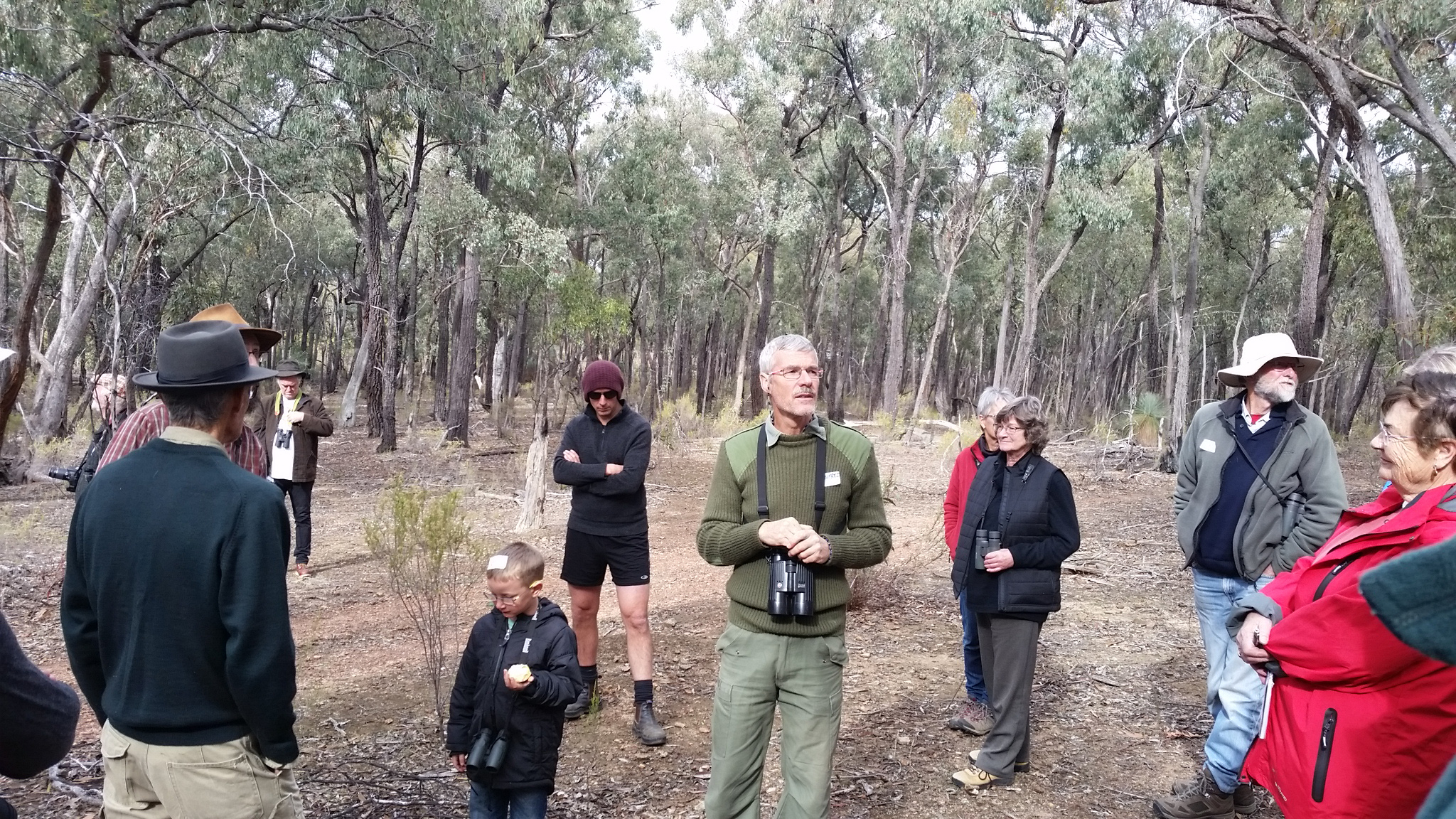The Ruffs bought a 132-hectare grazing property in Wirrate 21 years ago. They removed the sheep and the property has been managed for conservation ever since with over 140 species of birds recorded. It is protected by a covenant and they’ve done a lot of work to restore plants and wildlife including erecting 30 nest boxes.
The Ruffs have erected two ex-closures designed to keep herbivores out. One of them is in an open grassy area which would be heavily grazed by herbivores such as rabbits and kangaroos, the other ex-closure is in a woodland area, less preferable to herbivores. They are part of a long term monitoring project to compare the browsing behaviours between each of these landscapes. The main vegetation type on the property is Box Ironbark Forest with areas of nationally threatened grassy woodland. The property received funding from the Australian Government through the Goulburn Broken Catchment Management Authority to manage the woodlands.
Mistletoe has challenged the native trees, killing them in fact. So it was surprising when a mistletoe expert told people at a field day held on the property that the mistletoe plant benefits biodiversity.
Professor Dave Watson from Charles Sturt University says we need to understand the whole landscape to understand why mistletoe becomes a problem.
The landscape is recovering and the environment has changed, fire frequency has changed and many of the remaining trees were used as sheep camps, increasing nutrients around the trees. This still effects the health of the trees today, so extra pressures such as mistletoe have an added impact.
Mistletoe does have predators, one of the main ones being Common Brush Tail Possums, which love the sweet and juicy leaves. However the Brush Tail Possum population hasn’t recovered from recent culling history, (contrary to over population in some urban areas).
Butterflies are also predators – the Imperial White Butterfly lays its eggs on mistletoe and the voracious caterpillars reduce mistletoe growth.
